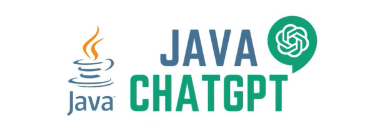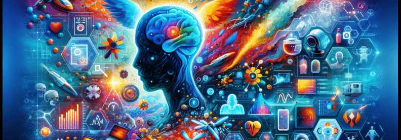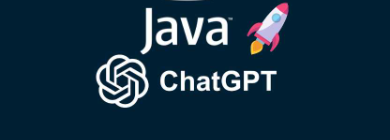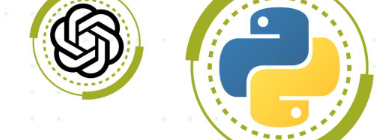Frequent regulatory changes, full automation under GST making compliance difficult and expansive for taxpayers However, given the dynamic nature of business transactions in today's digital age, automating this ever-evolving tax law is a complex and demanding task
Kishore Kumar
Chartered accountant, Lead-GST, Taxmann
The introduction of the Goods and Services Tax (GST) in India on July 1, 2017, was envisioned as a transformative step towards a seamless, technology-driven indirect tax regime. Central to this vision was the concept of invoice matching and automation, aimed at ensuring indirect tax compliance through real-time reconciliation of invoices between buyers and suppliers. However, the journey towards achieving this vision has been fraught with technical challenges, operational complexities, and the need for stakeholder readiness.Budget with ET
Tax calculator
Initially, at the time of implementation of GST nationwide, taxpayers were required to file GSTR-1 to report their outward supplies, cross-verify their eligible input tax credits against GSTR-2A and GSTR-2B and discharge their tax liabilities through GSTR-3B.Key mechanisms for automation of GSTR forms to achieve seamless GST compliance
However, over the recent years with the focus back on automation, the Central Board of Indirect Taxes and Customs (CBIC) has introduced key mechanisms to automate compliance under the GST framework. Notable initiatives include the implementation of E-invoicing and the Invoice Management System (IMS).E-invoicing: E-invoicing, or electronic invoicing, is a system introduced under the GST framework to streamline invoice generation and reporting outward supplies on the GSTN portal. It requires invoices to be generated in a standardized format and ensures seamless auto-population of outward supply details in GSTR-1, thereby reducing manual intervention and errors.
Invoice Management System (IMS): The Invoice Management System (IMS) is a digital functionality introduced on the GSTN portal to streamline invoice verification and reconciliation of eligible input tax credits for recipient taxpayers. Effective from, October 14, 2024, IMS enables recipients to match their invoices with those uploaded by suppliers in Form GSTR-1/IFF. Recipient taxpayers can perform the following actions on invoices via IMS:
Reject: Rejected invoices (towards ineligible credits) are moved to the "ITC Rejected" section in GSTR-2B and do not auto-populate in GSTR-3B.
Pending: Pending invoices remain on the dashboard for future action, such as accept or reject, and are excluded from GSTR-2B and GSTR-3B until finalized.
Impact of implementation of e-invoice and IMS
The government had introduced these tools to progressively automate compliance and eventually mandate their use for all taxpayers. Currently, e-invoicing is mandatory for businesses with an aggregate turnover exceeding Rs.5 crore in any financial year since FY 2017-18. The e-invoicing system is integrated by relatively large businesses and this threshold is also expected to be reduced, thereby expanding its applicability to a wider taxpayer base. Similarly, while the IMS is currently optional, it is expected to become a mandatory requirement for all taxpayers in the near future.With the integration of these advancements, the system has evolved into the following steps:
1. Outward Supplies Reporting: Outward supplies are reported through e-invoices, either manually or via computerized systems.
2. GSTR-1 Generation: GSTR-1 is generated by the suppliers, auto-populating the outward supplies filed through e-invoices with other outward supplies, if any, being manually reported. Amendments, if any, can be made through GSTR-1A.
3. Recipient Actions via IMS: Recipients must then take action through the Invoice Management System to either accept, reject, or keep invoices pending.
4. GSTR-2B Auto-Generation: GSTR-2B is auto-generated to provide a summary of ITC available to claim for buyer.
5. Tax Payments through GSTR-3B: Finally, tax payments are discharged through GSTR-3B, supported by the auto-populated data.
Currently, GSTR-1 and GSTR-3B allow taxpayers to input additional information manually. However, moving forward, the system is expected to transition towards greater automation with enhanced auto-population and hard-locking features, leaving no room for manual edits. The ultimate aim of GSTN is to streamline compliance by enabling a single-point data entry process. This means that all necessary information will be captured at the time of e-invoice generation, eliminating redundancy and minimizing errors.
Over the coming years, GST returns, including GSTR-1, GSTR-3B, and others, are expected to be fully auto-populated using data derived from e-invoices and other integrated tools. However, given the dynamic nature of business transactions in today's digital age, automating this ever-evolving tax law is a complex and demanding task. It is important to note that while taxpayers bear the financial burden of taxes, the compliance burden rests heavily on businesses.
The above-mentioned mechanisms have automated some processes to a certain extent, but the intended benefits of compliance automation remain largely unrealized, thereby undermining the broader objectives of simplifying compliance and enhancing the ease of doing business. This gap between expectation and reality highlights the need for a more balanced and practical approach to automation, ensuring that it supports businesses effectively without adding to their compliance complexities.
The Budget for 2025 introduced necessary amendments to align the GST law with automation mechanisms like the IMS, ensuring the inclusion of enabling provisions and maintaining legal consistency with existing practices, but it did not address any measures aimed at simplifying or easing compliance procedures for taxpayers. Despite the continued push for the same, there was no mention of further steps to reduce the complexity or burden of compliance requirements under the existing tax framework.
The journey toward a fully automated GST compliance system reflects the government's commitment to leveraging technology for a more efficient tax regime. However, automation must go beyond merely digitizing processes. It should deliver tangible benefits to taxpayers by reducing compliance burdens and enhancing accuracy. As businesses navigate this evolving landscape, the focus must remain on creating tools that are adaptable, user-friendly, and aligned with the diverse realities of the modern Indian economy.
(The article is written by CA Kishore Kumar, Lead-GST, Taxmann. CA Abhinav Mittal, Assistant Manager, Taxmann, also contributed to the article.)
(Disclaimer: The opinions expressed in this column are that of the writer. The facts and opinions expressed here do not reflect the views of www.economictimes.com.)
This story originally appeared on: India Times - Author:Faqs of Insurances




























































